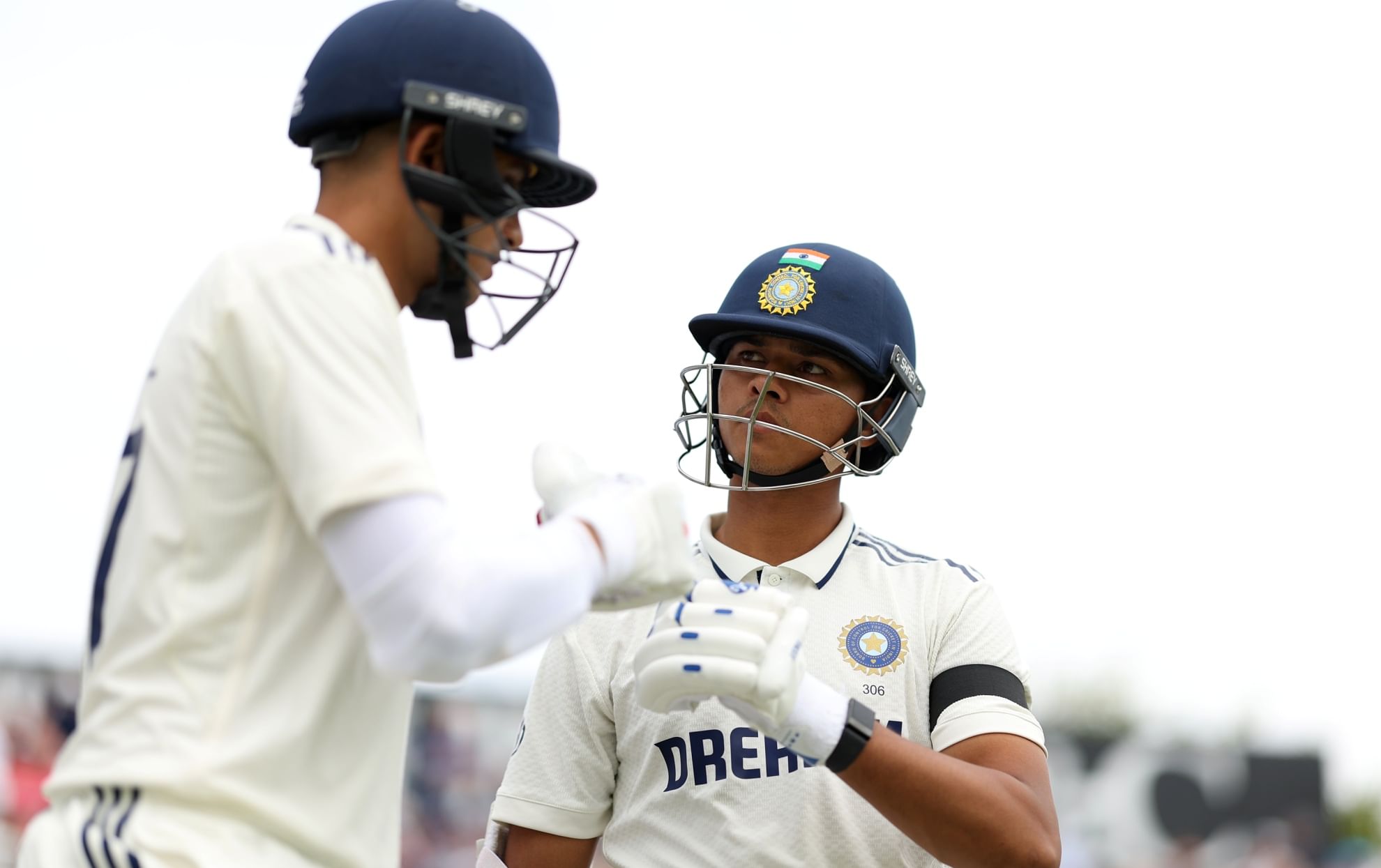ENG vs IND: Why were England penalised 5 runs on day 1 of Leeds test against India? Explained

(Courtesy : BCCI)
England won the toss and elected to field first in first ENG vs IND test at Headingley, Leeds.
For Ben Stokes and his England team, the opening day of the first test at Headingley, Leeds, has been a nightmare. Stokes’ choice to bowl first on a field that would not help him backfired, as Shubman Gill and Yashasvi Jaiswal made a spectacular profit, making England pay for the risk.
In particular, Jaiswal was in outstanding form, easily reaching his fifth test century and destroying the English attack in the opening two sessions. To make matters worse for England, they were penalized right before the tea break, which gave India five more runs.
Even Stokes seemed genuinely perplexed by the turn of events, while Joe Root was left in shock.
Here’s what happened as England gave away 5 penalty runs on day 1 of first ENG vs IND test
Ben Stokes bowled the sixth ball of the 51st over when the event happened. The delivery was edged by Yashasvi Jaiswal but fell just short of Harry Brook, a second slip fielder, who unintentionally redirected it onto the helmets behind wicket-keeper Jamie Smith.
To Joe Root’s astonishment, India were given five penalty runs as soon as the ball hit the helmet. With Jaiswal and Gill already controlling the game, Brook’s mistake just made matters worse for England.
As the umpires conferred with one another to ascertain whether the hitters had also completed a run, there was a moment of confusion on the field. India were only given the five penalty runs for the headgear infraction after it was eventually determined that no runs had been taken.
Here is what the rule book says about the ball hitting the helmets behind the wicket-keeper
In cricket, if the ball hits the wicket-keeper’s helmet while it is on the ground behind the stumps, whether on purpose or by mistake, the batting team is awarded penalty runs. Following the MCC Laws of Cricket, if the ball in play strikes any fielding equipment that has been purposefully placed on the ground, a five-run penalty is additionally imposed.
According to MCC Law 28.3.2, “if the ball strikes the protective helmet while in play, it shall immediately become dead, and the umpire shall award five penalty runs to the batting side.”
This regulation aims to stop teams from setting up their equipment in a way that can unjustly influence the outcome of the game by changing the trajectory of the ball or blocking possibilities for runs to be scored. To preserve the integrity and fairness of play, it acts as a disincentive.
For more updates, follow Khel Now Cricket on Facebook, Twitter, Instagram, Youtube; download the Khel Now Android App or IOS App and join our community on Whatsapp & Telegram.
Where passion meets insight — blending breaking news, in-depth strategic analysis, viral moments, and jaw-dropping plays into powerful sports content designed to entertain, inform, and keep you connected to your favorite teams and athletes. Expect daily updates, expert commentary and coverage that never leaves a fan behind.
- Ashes: List of all winners in history
- BBL: Top 10 bowlers with most wickets in Big Bash League history
- Ashes 2025-26: Jhye Richardson likely to replace Pat Cummins for Boxing Day test
- How was Rohit Sharma forced to retire after 2023 World Cup loss?
- RCB’s new recruit Jacob Duffy breaks Sir Richard Hadlee’s record, becomes first New Zealand player to…
- Ashes: List of all winners in history
- BBL: Top 10 bowlers with most wickets in Big Bash League history
- How was Rohit Sharma forced to retire after 2023 World Cup loss?
- RCB’s new recruit Jacob Duffy breaks Sir Richard Hadlee’s record, becomes first New Zealand player to…
- NZ vs WI: Tom Latham and Devon Conway break 23-year long record, become first opening pair to register...